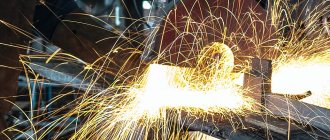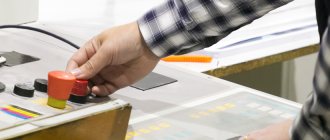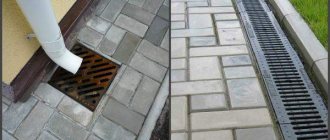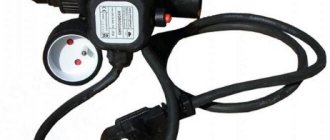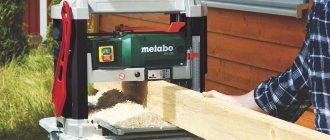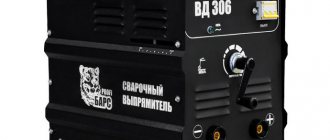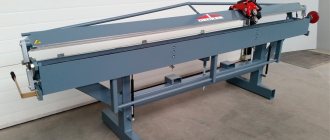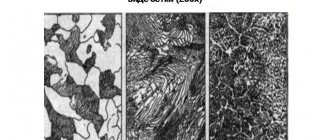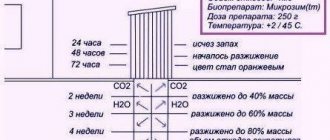The number of cars in Russia is increasing every year , and at the same time the number of worn tires is also growing.
The main recycling method - processing into crumb rubber - does not cover the full volume of secondary rubber-containing raw materials.
And although in recent years the rate of production of seamless coatings and asphalt from tire crumbs has increased significantly, large volumes of used tires remain unutilized.
What happens to the rest of the raw materials? Basically, rubber simply accumulates in landfills, increasing their already overwhelming volume.
Recycling by pyrolysis is a modern way of recycling tires and other rubber goods. It is successfully used abroad, but is not very popular in Russia yet.
How is tire recycling done?
Pyrolysis is the most cost-effective way to process rubber from used tires and other rubber goods, while not polluting the environment with combustion gases .
It goes like this:
- The tires are pre-separated into front and side tires using a bead cutter.
- The cut tires are loaded into a special container (retort), which is sealed and placed in the oven.
- The oven heats up to 450 0C and the pyrolysis process begins, during which gas is released. When the decomposition of the raw material ends, the retort is removed and replaced with a new one.
- After cooling, which takes several hours, the container is unloaded, separating the carbon residue from the metal cord.
The procedure differs from conventional combustion in the absence of oxygen, which is necessary for combustion.
Under such conditions, chemical reactions occur, as a result of which gaseous oil fractions are released , and carbon powder and cord remain in the oven.
The production is waste-free, since all pyrolysis products are used in industry, bringing good profits.
Types of rubber waste disposal
Depending on the method of exposure, the following methods of tire disposal are distinguished:
- Physical.
- Chemical.
This technology is the most progressive and modern of all existing technologies related to the decomposition of rubber into its component parts.
Obtaining crumb rubber
Physical involves mechanical grinding of raw materials to the state of crumbs. The resulting powder is used in the production of new tires. This method is quite popular. In addition to rubber, chemical fibers and small amounts of steel are obtained from old tires.
The processing process begins with cutting the raw materials into small pieces. Using a magnetic separator, the remaining metal cord is removed. The resulting mass is crushed to a crumb state.
Processing tires into crumb rubber
Pyrolysis method
This technology is based on the decomposition of raw materials into components under the influence of temperatures without the participation of oxygen. The result of pyrolysis depends on the temperature at which waste disposal occurs. There is low and high temperature pyrolysis. The method has become widespread in Europe. Pyrolysis of tires is more environmentally friendly than burning and is economically interesting, as it allows you to obtain fuel from waste material.
As a result of pyrolysis recycling, the following products are obtained from old tires:
- Synthetic oil (the basis for the production of various petroleum products, including fuel).
- Carbon black. It is used as a dye for concrete, for the manufacture of conveyor belts, and for the manufacture of paving slabs.
- Metal cord (reused for the production of new tires or used for scrap).
- Thermolysis gas (used for tire recycling plants or mini-boilers to provide heat).
The most cost-effective method is tire retreading through vulcanization. This option is most relevant for large wheels. The product obtained by this method is several times cheaper than a new tire. It is most profitable to recycle passenger car tires using pyrolysis.
Output products
There are several output products. This:
- liquid fuel;
- carbon-containing residue;
- pyrolysis gas;
- metal cord tires.
Each of these products can be used beneficially.
Liquid output
The output liquid obtained during rubber pyrolysis is synthetic oil , similar in composition to natural oil.
With additional processing, it can replace many fuels and lubricants - gasoline, diesel fuel, oil, etc.
In the US, more than 100 million used tires are turned into diesel fuel every year, and one tire is equivalent to 30 liters of oil.
In a pinch, unprocessed pyrolysis oil obtained from tires can be used as fuel for furnaces and boilers.
Solid carbonaceous residue
Used in various fields:
- in the manufacture of certain rubber products (for example, conveyor belts, insulation materials or new tires);
- in paint and varnish and cement production - as a dye;
- used as a sorbent instead of activated carbon;
- can serve as solid fuel or as a component for liquid fuel.
Pyrolysis gas
This volatile component is similar in composition to natural gas.
is converted into a liquid fraction during the operation of pyrolysis equipment , and the non-condensable residue is used to maintain the combustion of the furnace.
Metal cord
This is the tire core, the only component that does not undergo changes during pyrolysis.
The reinforcing material of car tires is high-quality steel, which, with additional processing, is successfully used as binding wire or remelted .
Find out more about steel cord and how it can be used here.
Advantages of tire pyrolysis
The method is used in mechanical engineering, pulp and paper production, and petrochemicals. In the USA, tire pyrolysis has gained popularity due to the production of fuel liquid in installations that replaces petroleum products. In addition, pyrolysis has a number of other advantages:
- The least impact on natural ecosystems, safety, environmental friendliness of the method and processed products.
- Waste-free production, efficiency.
- Versatility. The method allows the processing of a variety of materials, therefore it is used in many sectors of human activity.
- Resulting in obtaining valuable types of fuel and raw materials.
Is it possible to make the equipment yourself?
The design of such a pyrolysis plant for rubber processing is simple; it can be made with your own hands.
This will require pipes of various diameters, shut-off valves and a thermometer.
You can take an iron barrel as a heating chamber, and use a can for a retort.
This equipment will function, but only for scientific and educational purposes. The resulting product is unsuitable for use and requires further purification and processing.
The volume of such “home” production does not allow us to talk about serious benefits.
To independently build a plant that processes an acceptable volume of raw materials, you will need up to 10 million rubles, which is comparable to the price of an average factory-made pyrolysis line.
Pyrolysis is an unsafe process. If air enters a homemade retort during operation of the unit, an explosion may occur , which can result in serious injury.
If we talk about starting a business for converting tires into fuel, it is better to purchase ready-made equipment manufactured by specialists.
Pyrolysis lines of various capacities are now available on the market. Such installations include all kinds of additional components to speed up the process , increase the quantity and quality of output products:
- scrubbers - devices that cool pyrolysis gas with a special reagent and partially condense it into a liquid fraction;
- separators - designed to reduce the moisture content of the remaining gas before feeding it into the furnace;
- condensers - they are where the final conversion of the gaseous fraction into liquid occurs after the scrubber;
- filtering facilities for additional purification of gases emitted into the atmosphere.
What is tire pyrolysis: the essence of the operating method of a pyrolysis tire processing plant
The number of cars in Russia is increasing every year , and at the same time the number of worn tires is also growing.
The main recycling method - processing into crumb rubber - does not cover the full volume of secondary rubber-containing raw materials.
And although in recent years the rate of production of seamless coatings and asphalt from tire crumbs has increased significantly, large volumes of used tires remain unutilized.
What happens to the rest of the raw materials? Basically, rubber simply accumulates in landfills, increasing their already overwhelming volume.
Recycling by pyrolysis is a modern way of recycling tires and other rubber goods. It is successfully used abroad, but is not very popular in Russia yet.
How does the stove work?
The technological process on a factory production line goes like this:
- The heated gas is supplied from the furnace through a pipeline to the scrubber, where cooling and partial condensation take place.
- It then passes through special piping, which provides additional cooling, to condensers for final conversion into liquid fuel.
- The remaining gas, which cannot be converted into liquid, is sent for drying to a separator, from where it goes to a pyrolysis furnace for further processing.
The most advanced pyrolysis technological lines catalytic cracking that distill pyrolysis oil into various types of fuel. But such equipment is already a whole plant, both in area and in cost (up to several million euros).
Despite the fact that the tire pyrolysis business is not yet very widespread in Russia, there are good examples of equipment for the pyrolysis processing of domestically produced tires on the market.
How the process of recycling and processing by pyrolysis is built
Chemical recycling of tires includes the following steps:
Tire pyrolysis recycling scheme
- Tires to be recycled are collected at a recycling point.
- Using a special machine, the tire is cut into pieces, separating the tread and beads.
- The prepared raw materials are loaded into a retort and heated to a temperature of 1000 - 1400°. The thermolysis gas released during waste processing is cooled and converted into pyrolysis oil.
- The retort is replaced with another one filled with the next batch of raw materials.
- The cord remaining after completion of the operation is screened out and sent for further processing.
- The same thing happens with the carbon formed during pyrolysis.
It should be noted that the gas released during the pyrolysis process is used to maintain combustion in the installation. Part of the waste enters the atmosphere, therefore, when constructing a processing plant, the location relative to the nearest residential and other facilities is taken into account.
Suppliers of pyrolysis plants
Tekhnokompleks LLC (Rostov-on-Don) offers PIROTEX equipment, which provides the maximum volume of high-quality liquid fuel.
Prices vary widely depending on the performance of the equipment and the degree of automation: from RUR 2,870,000.00. for an installation with a capacity of 2 tons per day up to 35,900,000.00 rub. for a monster with 32 retorts, capable of absorbing 28 tons of raw materials per day.
All models and prices are presented in more detail in the price list on the company’s website.
The company also supplies additional equipment that facilitates work with the installation: monorail tracks with electric hoists and hydraulic tippers for crucibles.
The installation for processing tires "ROSEKO" manufactured by LLC "RM" (St. Petersburg) is capable of producing gas and diesel fuel.
The equipment is compactly mounted in a single container and is capable of recycling 2.5 tons of raw materials per day.
The cost of installation is 9 million rubles.
The T-PU1 pyrolysis line produced by PTK Pyroliz-Ekoprom LLC (Nizhny Novgorod) costs only 2.5 million rubles - in the basic configuration with one retort.
It is better to purchase one or two more loading containers for continuous operation. The installation is capable of processing up to 6 cubic meters of raw materials per day, consuming only 1.1 kW/h of electricity.
Possible difficulties when opening a pyrolysis production
Despite the economic attractiveness, the organization of pyrolysis production can be fraught with some pitfalls. It is important to take some considerations into account before investing in equipment and people.
Safe, high-quality and reliable solution for tire recycling
Features of the technology for working with any waste require placing equipment away from residential areas. The distance to the nearest houses must be at least 300 meters. But this does not guarantee you the absence of a negative reaction from residents. The ideal place would be an abandoned workshop of some enterprise. But its arrangement will also require time and money.
Environmentalists are very wary of processing methods such as pyrolysis. It is absolutely certain that the owner of the installation will be required to purchase cleaning equipment. Its cost is sometimes comparable to investment in core processes.
An entrepreneur must be prepared for questions and demands from regulatory authorities, fire inspectors and other authorities. Pyrolysis falls under the concept of “waste recycling”. Such activities require a special license.
Taking into account the above points, we can say that it is not profitable to recycle only old car tires. Experts agree that the ideal option would be to produce some other raw materials. An example of such a product would be glass or plastic.
What is pyrolysis?
Pyrolysis is a special physical and chemical process that involves the decomposition of rubber tire elements under high temperature and without air access.
If tires are simply heated in an open atmospheric environment, they will first smolder and subsequently catch fire, releasing a lot of harmful substances into the atmosphere. When heating occurs without air access, there are no conditions for combustion. In this case, chemical reactions of a different type begin to occur, allowing ordinary rubber to decompose into several oil fractions, which, due to high temperatures, remain in a gaseous state. They can be condensed to produce pyrolysis oil, as well as non-condensable pyrolysis gas. This gas can be recirculated into the reactor furnace to maintain cyclicity of the process and eliminate the need for additional fuel to operate the pyrolysis plant.
Thanks to this technique, it is possible to obtain a waste-free recycling technology with minimal impact on the environment. If we compare the usual burning of tires with the pyrolysis process, it should be noted that the latter is several times more environmentally friendly and additionally makes it possible to obtain secondary raw materials.
We also recommend watching a video about making a pyrolysis boiler with your own hands for 15-25 kW
Pyrolysis boiler or how I started heating myself with car tires and everything that burns
IMHODom › Forums › communications and heating › Pyrolysis boiler or how I started heating myself with car tires and everything that burns
Heating systems (HS) with a solid fuel boiler (SFC) are periodic systems in which the boiler generates heat only when there is fuel in it. In this regard, the owners of the TTK, sooner or later, acquire heat accumulators that accumulate excess heat generated during the operation of the TTK and give it back to the house after the fuel in the boiler has run out.
As an advantage of classic boilers, they sometimes point out that they can supposedly burn wood with high humidity, but in my opinion, burning with raw wood does not respect oneself.
My choice
If, after reading this, you no longer plan to heat with raw wood, then based on my life experience, I would recommend a pyrolysis boiler.
Before this, I already had two years of experience in operating the KALVIS–2-70 grate mine boiler. Among the identified shortcomings, I note that its heat exchanger could not be cleaned of resins deposited on it without preheating to a temperature above 60°C. Ultimately, realizing all the technological flaws of this design, I decided to turn to specialists for a radical redesign. As a result of this deep modernization, I became the owner of a pyrolysis boiler.
Installation
It is better to place the boiler in a room specially designated for it, since I have not yet met boilers that do not smoke in the room when reloading with fuel (and mine, moreover, sometimes smokes also due to imperfections in the design).
Among other things, you need to take into account that the boiler for its operation will require a large flow of air into the room in which it is located, which will cause cold drafts. From all of the above, it is better to place the boiler in a separate room in the body of the house.
My chimney is located vertically without bends and is part of the internal wall of the house, and during operation of the boiler it additionally radiates heat into the house.
Since a boiler is a unit in which the generated heat is transferred to the coolant water, there are no “hot” parts on its surface, since it does not heat up above the boiling point of water. In addition, the water jacket on the outside is usually protected by a casing, the temperature of which rarely exceeds 30 - 35 degrees.
Firewood harvesting and more.
The main type of fuel for a pyrolysis boiler is wood.
In addition to firewood, the pyrolysis boiler happily consumes straw, pellets, shavings, peat briquettes and regular peat, sorted household waste (paper, plastic, packaging, everything except PVC) and all this seasoned with waste oil or any other liquid hydrocarbon waste.
Fire of burning tires
This is what car tires look like ready to be loaded into the boiler.
The fact that I am not the only one who regards the tire as an excellent fuel can be assessed by the quantity
I must also emphasize that in no case am I calling for the widespread burning of car tires in home heating units. Living in society among people, arranging our life, we should not cause inconvenience to our neighbors, including our actions should not violate the legislation of the states of which we are citizens.
I mention tire as fuel in this article only as a private successful experience, which became possible after a thorough modernization of a serial household boiler, subject to constant close monitoring of the combustion process through a video camera and operational control.
Ignition
It is easier to light the boiler with a small amount of firewood (this is done through the lower firewood loading window), but if desired, you can start the boiler with a full load (for such loading, the upper firewood loading window is used).
Combustion products
The pyrolysis chamber of the boiler (also known as the ash pan) has to be cleaned every time after a heating cycle (about 10 - 12 hours of continuous operation), since its volume is limited, and the pyrolysis gases still need to burn somewhere.
I try to clean the boiler heat exchangers through the heating cycle, that is, about twice a month, since the efficiency of heat extraction generated in the pyrolysis chamber depends on the degree of their cleanliness. Usually, after one heating cycle, a bucket of ash and almost clean steel cord from tires remains. Both ash and steel cord turned out to be a valuable product for further use.
The products of complete combustion of TTK fuel are carbon dioxide, water and ash. It is water vapor that colors the smoke white in an unheated chimney. The product of incomplete combustion of TTK fuel can be soot. A significant amount of it can color the smoke black, and a small amount, when mixed with water vapor, can turn it into various shades of gray.
Boiler design
There are three doors on the front of my boiler:
Air for fuel in my TTK is supplied through three air dampers to different zones of the boiler, which makes it possible to obtain the most efficient combustion of fuel.
The presence of 3 air dampers, a temperature graph in the chimney and a video camera in the pyrolysis chamber allows you to minimize heat losses and obtain the most efficient combustion of not only various types of wood, but also higher-calorie fuels, such as sorted household waste and worn-out car tires.
Benefits of tire pyrolysis
Disposal of waste tires using pyrolysis plants has a number of undeniable advantages:
Summarizing the above, we can conclude that recycling unnecessary tires using pyrolysis is the only correct way to process waste from the automotive industry, which maximally protects the environment from pollution with harmful substances. In addition, pyrolysis technology is also beneficial for business, because, at minimal cost, it allows one to obtain a large number of different substances that can be used as secondary raw materials for the production of new products, generating thermal energy and electricity.
Source
Purification, clarification and distillation into fractions
A feature of the pyrolysis liquid is the difference in chemical composition (due to different production raw materials) and the absence of some stable physicochemical properties. For example, in pyrolysis fuel the iodine number (the mass of iodine in 1 g per 100 g of substance) and the cetane number are not standardized (the higher it is, the more calmly and smoothly the fuel mixture burns). Because of these nuances, it is impossible, for example, to use pyrolysis liquid to replace diesel fuel used in transport. Therefore, the pyrolysis liquid is processed: purified, clarified, and distilled into fractions. To clarify and purify the pyrolysis liquid, sorbents are used - solids or liquids that selectively absorb gases, vapors or dissolved substances from the environment. For example, to remove various types of impurities in industry, sorbent cartridges with zeolite powder are used. This sorbent can be used up to 400 times. Sometimes reactive clay is used instead of zeolite. Pyrolysis fuel produced from oil-containing waste (tires, crumb rubber, some plastics, oil sludge, waste oils) can be distilled into fractions. Fractional composition of pyrolysis fuel: ➢ gasoline - 25%, ➢ diesel fuel - 50%, ➢ fuel oil - 24%, ➢ losses - 1%.
Composition and characteristics of pyrolysis fuel
Pyrolysis is the process of thermal decomposition of organic and some inorganic compounds in an inert atmosphere (without oxygen). Most often we are talking about high temperatures (450-600 ° C). One of the resulting products of the pyrolysis process is pyrolysis fuel. It is characterized by the following physicochemical parameters:
- ➢ high density - 985 kg/cm³,
- ➢ optimal viscosity - 6.97%,
- ➢ low sulfur content - no more than 0.5% (high sulfur content in fuel leads to wear of equipment and is harmful to the environment),
- ➢ low ash content - 0.08% (little non-flammable residue).
The pour point of pyrolysis fuel is from -53°C.
The lowest calorific value is 45,400 kJ/kg. Flash point in a closed crucible is 47 °C. In modern industry, the following are used as raw materials for pyrolysis processing:
- ➢ car tires,
- ➢ plastic solid waste (bottles, packaging, etc.),
- ➢ used polypropylene (pipes and fittings) and polyethylene (bags, gloves, other similar products).
Scope of application
The result of processing is a dark-colored oily liquid. This is approximately thirty to forty percent of the total mass of the processed material. It is chemically similar to fuel oil and heating oil and is called pyrolysis oil. It is used in boiler houses, industrial furnaces and heat generators. Pyrolysis oil can also be processed to produce higher quality products - fuel oil or combustible fuel.
Potential buyers include:
- – boiler rooms;
- – owners of private houses;
- – industrial enterprises.
High temperature mode
High temperature mode at 1000-1400 degrees Celsius allows you to completely eliminate all the shortcomings of the previous version. But when processed at such temperatures, it produces gas, which must somehow be stored in cylinders and transported using special transport.
The boiler is an installation that can be of various sizes. Inside there is a reactor, which consists of a shaft furnace and a welding shaft. Before loading into the furnace, the tire must be crushed, small fractions are poured into the upper part of the reactor, then the system releases them down to the welding shaft, where they are first dried and then heated.
Since the entire system is tightly closed, gases and rubber decomposition are formed inside, the gases go to a special boiler, which collects them and sends them to a spray dryer, and from there to a special absorbent. Thanks to the absorbent, all gases are easily purified from harmful substances and released into the environment.

